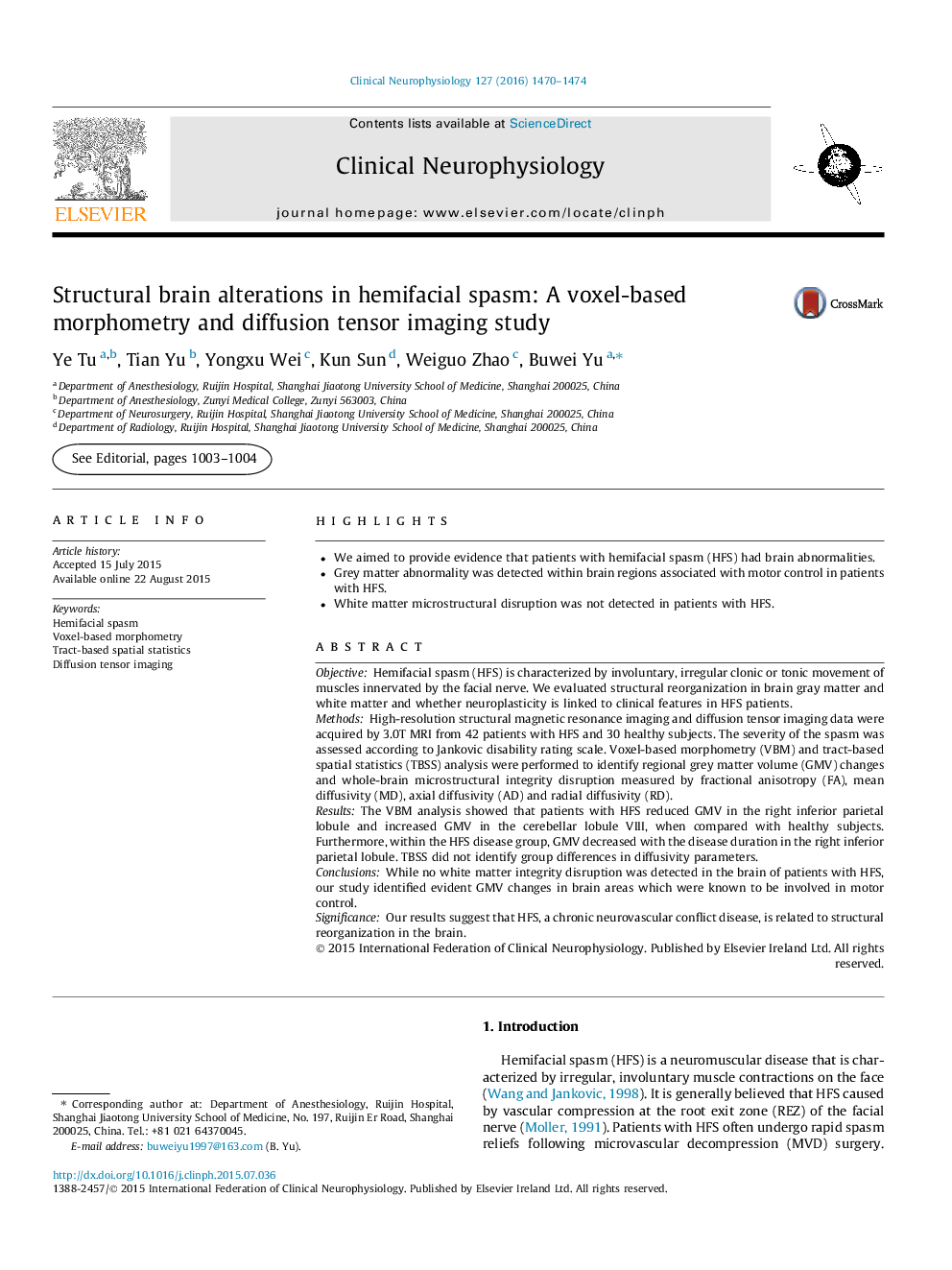| کد مقاله | کد نشریه | سال انتشار | مقاله انگلیسی | نسخه تمام متن |
|---|---|---|---|---|
| 6007626 | 1184953 | 2016 | 5 صفحه PDF | دانلود رایگان |
- We aimed to provide evidence that patients with hemifacial spasm (HFS) had brain abnormalities.
- Grey matter abnormality was detected within brain regions associated with motor control in patients with HFS.
- White matter microstructural disruption was not detected in patients with HFS.
ObjectiveHemifacial spasm (HFS) is characterized by involuntary, irregular clonic or tonic movement of muscles innervated by the facial nerve. We evaluated structural reorganization in brain gray matter and white matter and whether neuroplasticity is linked to clinical features in HFS patients.MethodsHigh-resolution structural magnetic resonance imaging and diffusion tensor imaging data were acquired by 3.0T MRI from 42 patients with HFS and 30 healthy subjects. The severity of the spasm was assessed according to Jankovic disability rating scale. Voxel-based morphometry (VBM) and tract-based spatial statistics (TBSS) analysis were performed to identify regional grey matter volume (GMV) changes and whole-brain microstructural integrity disruption measured by fractional anisotropy (FA), mean diffusivity (MD), axial diffusivity (AD) and radial diffusivity (RD).ResultsThe VBM analysis showed that patients with HFS reduced GMV in the right inferior parietal lobule and increased GMV in the cerebellar lobule VIII, when compared with healthy subjects. Furthermore, within the HFS disease group, GMV decreased with the disease duration in the right inferior parietal lobule. TBSS did not identify group differences in diffusivity parameters.ConclusionsWhile no white matter integrity disruption was detected in the brain of patients with HFS, our study identified evident GMV changes in brain areas which were known to be involved in motor control.SignificanceOur results suggest that HFS, a chronic neurovascular conflict disease, is related to structural reorganization in the brain.
Journal: Clinical Neurophysiology - Volume 127, Issue 2, February 2016, Pages 1470-1474
